Hi all! Many exciting things happening this month, namely the launch of The BentoNet and my first art exhibition at ArtSHINE gallery, called “Celebrations” that is a joint exhibition with a group of Sydney Comics Guild artists.
Event: Art Exhibition + BentoNet Launch
Where: ArtSHINE Gallery, 3 Blackfriars St, Chippendale, Sydney NSW 2008 (15 min walk from Central Station, Opposite UTS)
When: 25th June, 2016. The exhibition is from the 25th June – 20th July, 2016
Time: BentoNet presentation is from 1:30pm-2:30pm on the 25th June
I spent some time preparing my Artist Statement and Artwork Statements, and my approach is particularly unusual, especially when compared to the kinds of artists who exhibit in art galleries.
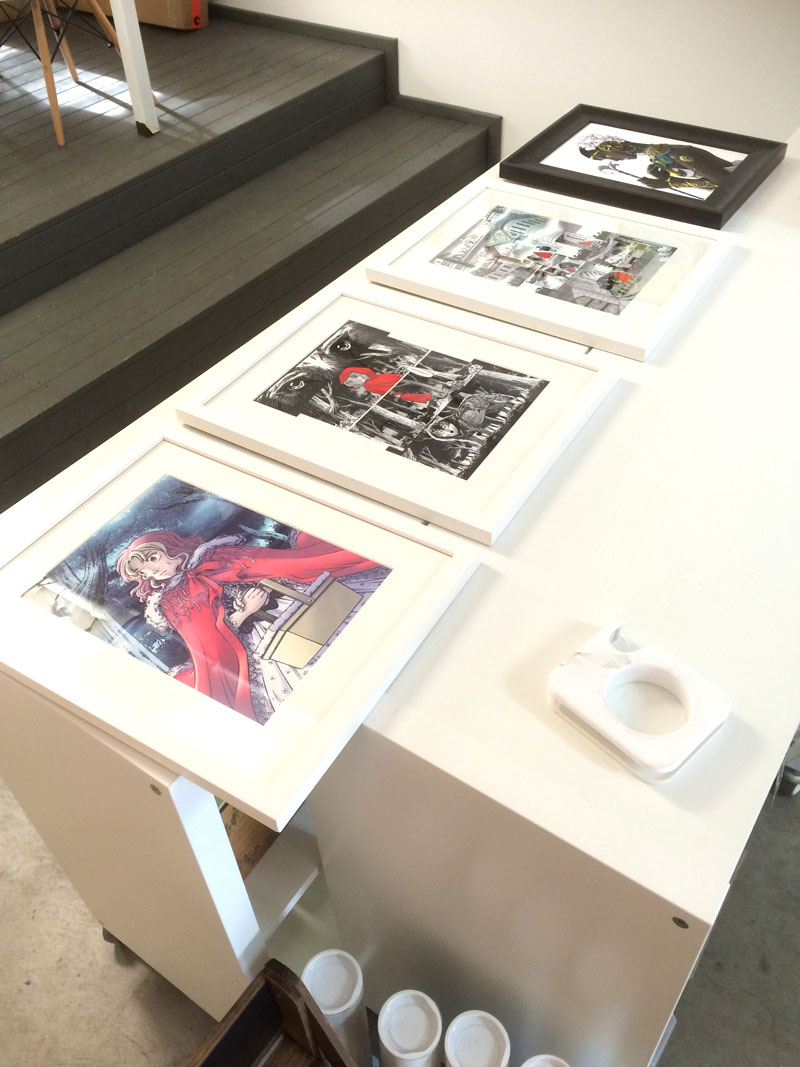
Queenie Chan: Artist Statement
As a practitioner of the ‘ninth art‘ (comic strips), I am interested in bringing the narrative of comics – rather than just the art of comics – into art galleries. My approach makes me unusual among comic book artists, but I have always considered myself a ‘writer who draws.’ As such, I come with a unique viewpoint in how I regard my art, and the place art has in my work.
I’m interested in stories, and the ideas, symbols, archetypes and social critique that can exist in them. Comics involve art, but is really a medium for story-telling; the essence of the form is best expressed through sequential arrangement of a series of images and a blend of words and pictures. What is the best way to bring this into a gallery space? How can one distil the base ideas of a narrative into a form that is digestible on a gallery wall? These are all questions I want to ask.
Based in Sydney, Australia, I have been published both nationally and internationally, and had my work translated into multiple languages. I also run a start-up company called ‘The BentoNet,’ which has the goal of being an infinite bookshelf for independent book stores.
The following works are in a series, numbered 1-4. The series title is “Fabled Kingdom”, and apart from them being in a sequence, they are also tied to my “Fabled Kingdom” books in ideas and thematic content.
Artwork Statement: Fabled Kingdom Series #1/4
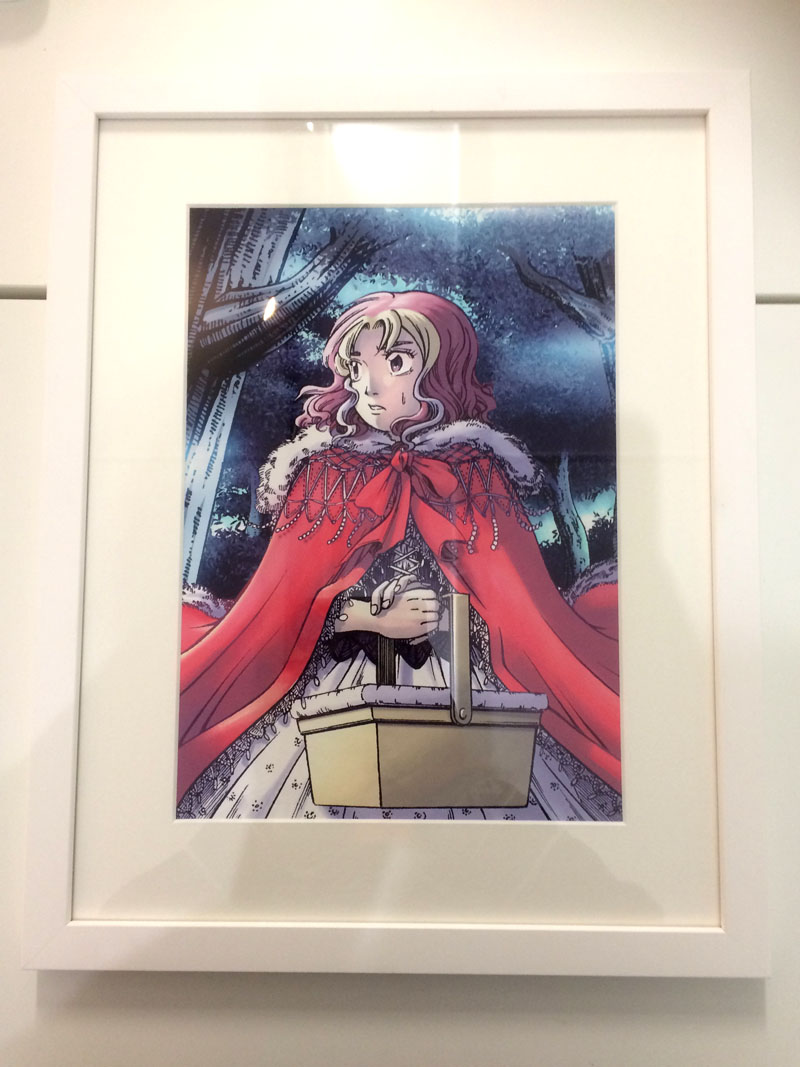
Title of Work: Red Hood: Primal Archetype (#1 of 4)
Medium: Pen and Ink, Digital
Dimension Framed (HxW): 400mm x 300mm
Little Red Riding Hood is one of the most well-known fairy tales, but its heroine is a blank slate. She wanders through a series of surreal events that makes little logical sense, but which is abstract enough that we insist on investing our own ideas and emotional baggage into the narrative.
Red Riding Hood is always nameless, but her journey through the woods is often interpreted as a naïve, young girl stalked and eventually consumed by a wolf-like representation of male sexuality. It’s seen as a lurid story of innocence debauched, but it also has sexist connotations – the fact that Red Riding Hood is never depicted as a boy is very telling. However, because she is such a cipher, she has also unwittingly become the most widely-recognisable female archetypes in our pop-culture landscape. Her red hood is literally visual shorthand for “young, female, and a victim.”
But is Red Riding Hood doomed to such a fate? If her red hood is so widely-recognised that it’s become iconic, need it remained tethered to a narrative that always ends with her ravaged? If you remove her from the woods, and place her (and all she represents) into a different environment, how would that play out?
Artwork Statement: Fabled Kingdom Series #2/4
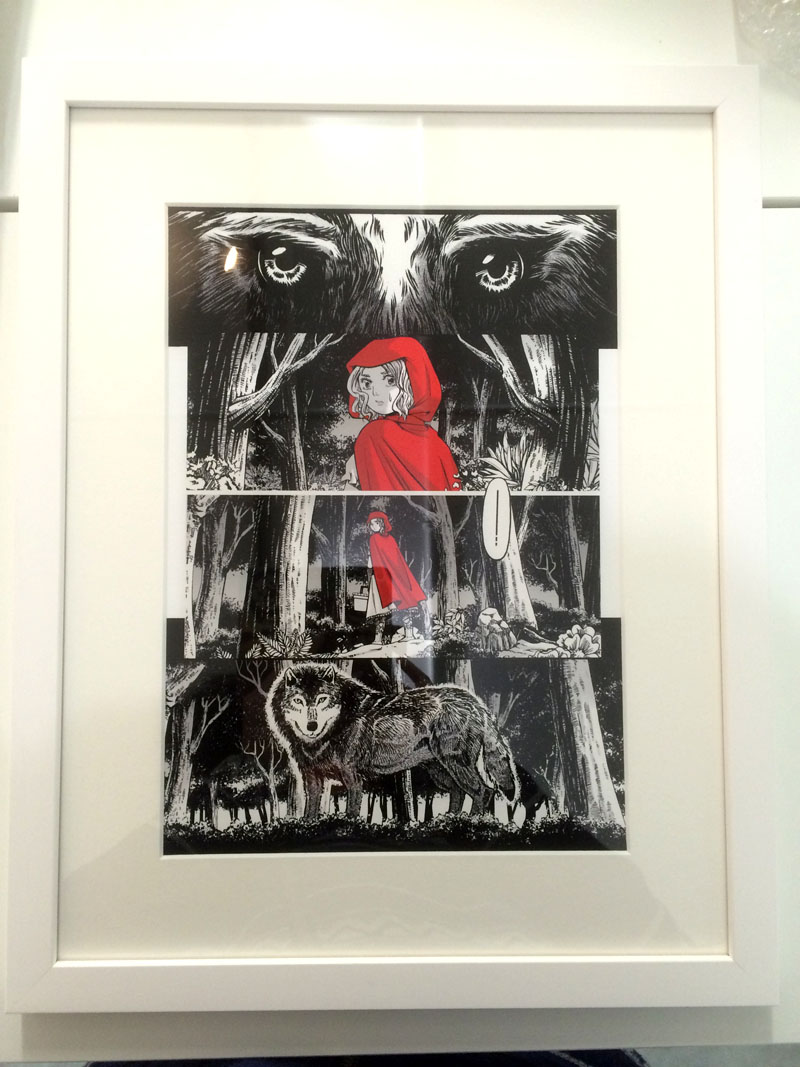
Title of Work: Out of the Woods (#2 of 4)
Medium: Pen and Ink, Digital
Dimension Framed (HxW): 400mm x 300mm
Red Riding Hood’s encounter with the wolf in the woods is always depicted as a threatening scenario of an innocent girl about to be led astray. This part of the story is so well-known that the outcome is a foregone conclusion – either rape, or temptation.
When I wrote “Fabled Kingdom,” I decided to subvert this outcome by altering the relationship between the wolf and Red Riding Hood. By revealing very early on that the wolf is Red Riding Hood’s father, the lurid threat of male debauchery that the wolf always represents is effectively neutered. You can see me depict this in the panels – the wolf’s gaze is more sad than lustful, and its pose is neutral.
In my story, the wolf instigates her journey out of the woods, and away from the original ending of her story. As such, the wolf almost takes on the role of a “wise old man,” opening up a world of possibilities for Red Riding Hood. Instead of becoming a sacrificial lamb, this archetype of “young, female, and virginal” now has a chance to find a better ending.
This is significant. Traditionally, the reason why the role of women has always been tied to home and hearth is because they were forbidden to travel long distances. Since we live in a different world now, the only modern outcome for Red Riding Hood’s story is to literally expand her horizons and have her embark on a Hero’s Journey.
Artwork Statement: Fabled Kingdom Series #3/4
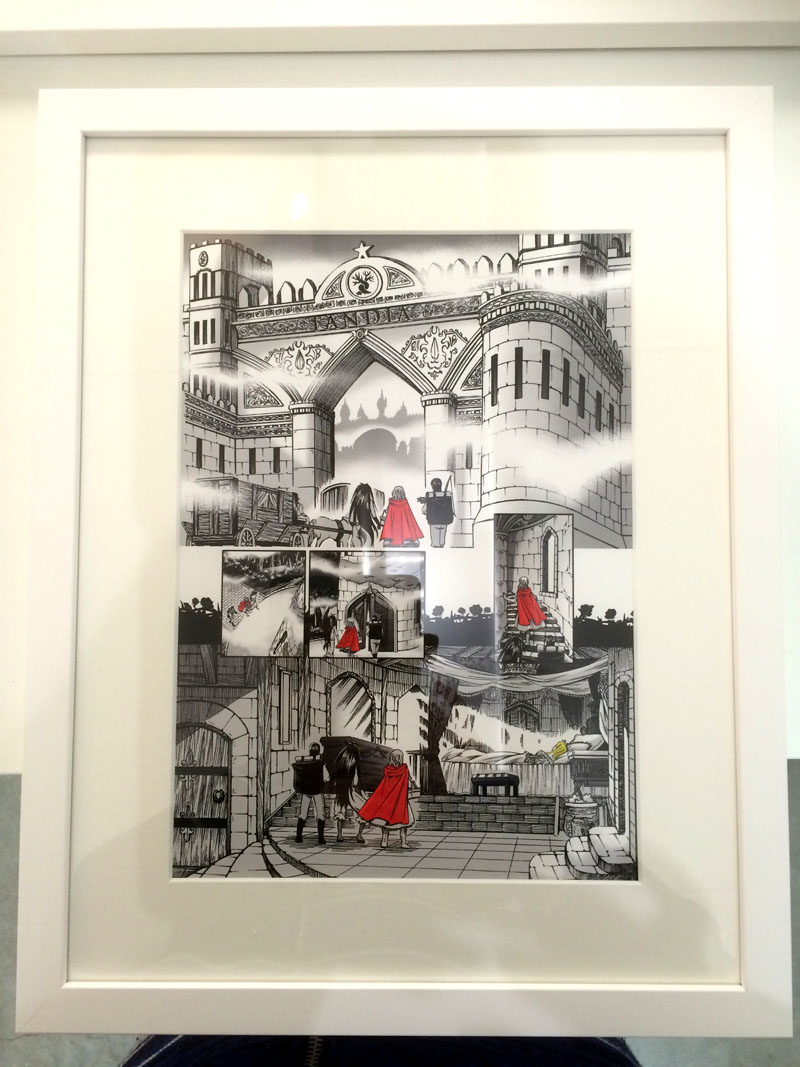
Title of Work: Into the Halls of Power (#3 of 4)
Medium: Pen and Ink, Digital
Dimension Framed (HxW): 400mm x 300mm
“Fabled Kingdom” is a fairy-tale mash-up, but for deliberate reasons. I’ve established that Red Riding Hood is the embodiment of “young, female and virginal,” and nowhere are those traits more valued than in traditional depictions of female royalty, whether in fairy tales or in real-life.
In my story, Red Riding Hood leaves the wild, untamed woods to seek her true parentage in civilised society, the pinnacle of which is represented by cities, castles and royalty. Instead of being ravaged, she discovers that she is a princess of sorts. At this stage, it’s easy to forget that princesses, despite being promoted in our society for their beauty and frivolity, actually serves an important purpose – they were originally political figures, and stood close to the centres of power. In this story, power is not defined by physical beauty but by political, cultural and economic influence – all of which are attainable by a female political figure if she plays her cards right.
The halls of power are filled with no less danger than the woods, but it’s a different kind of danger. In the woods, Red Riding Hood has no recourse but to be swallowed by the wolf because she’s the symbol of “young, female and virginal”, but in the halls of power, these very qualities could become useful tools that will make her a power player. At the end of the day, power is about projecting an image, and Red Riding Hood’s original story was also about projecting images – the image of a female victim, as our society tends to view it.
But need it be that way?
Artwork Statement: Fabled Kingdom Series #4/4
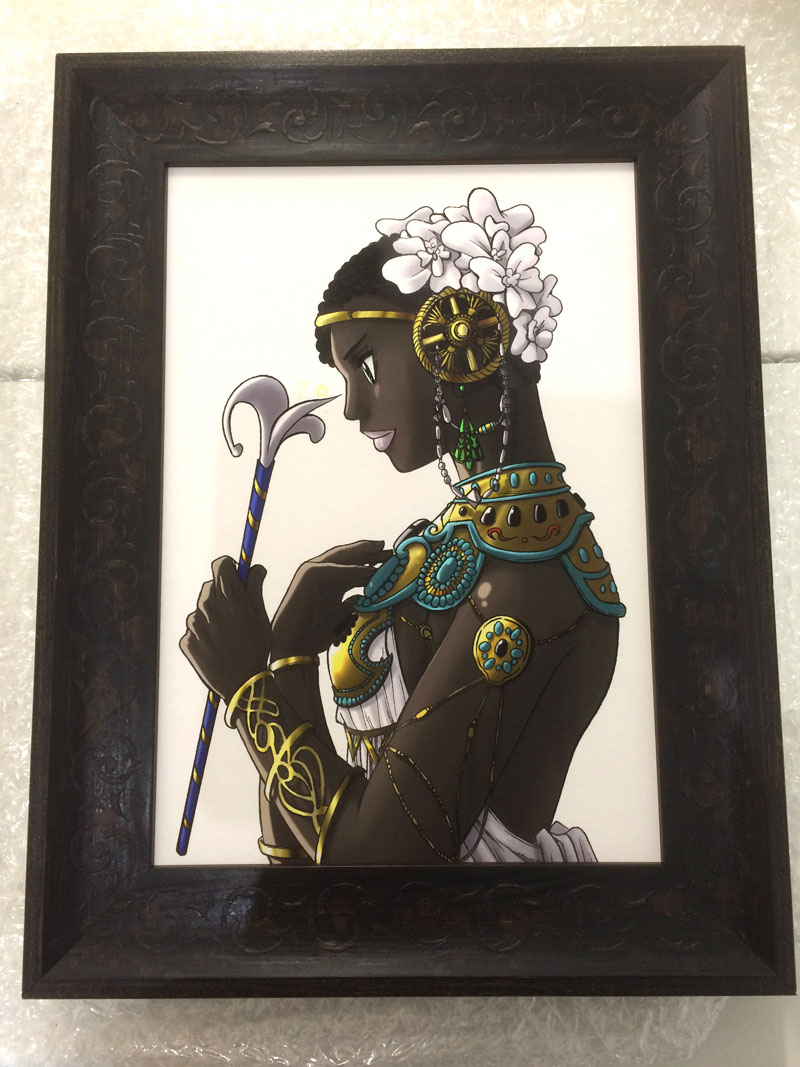
Title of Work: Manufacturing the Black Virgin (#4 of 4)
Medium: Pen and Ink, Digital
Dimension Framed (HxW): 300mm x 210mm
Being a visual narrative, comics has the potential to challenge existing beauty ideals. Fairy tales are a global phenomenon, but its origins are still very Germanic, and therefore lily-white. Despite the best effort of Disney and other media companies, their efforts to create princesses that are people of colour have been awkward at best.
Since it’s been established that Red Riding Hood is a symbol of “young, female and virginal,” it’s telling that she is always depicted as pale-skinned. Our society subconsciously equates purity with whiteness, a visual hierarchy that is played out daily and across the globe, in mass media and advertising. There’s no denying that dark-skinned black women are more frequently depicted as hyper-sexual, if they’re depicted at all, and their sexual exploitation is seen as less of an outrage by the same exploitation of pale-skinned women.
Which is why I went out of my way to create a dark-skinned emissary in my story, who hails from a kingdom full of people who revere dark skin. I did this with the goal of expanding representation of dark-skinned women, which is only just beginning to happen in our mass media culture. To show that the narrative of black women is still evolving, I have deliberately left the background to this picture blank, and framed it differently to the other pictures. Hopefully in the future, symbols of female beauty, purity and virginity will include women of all skin tones.
